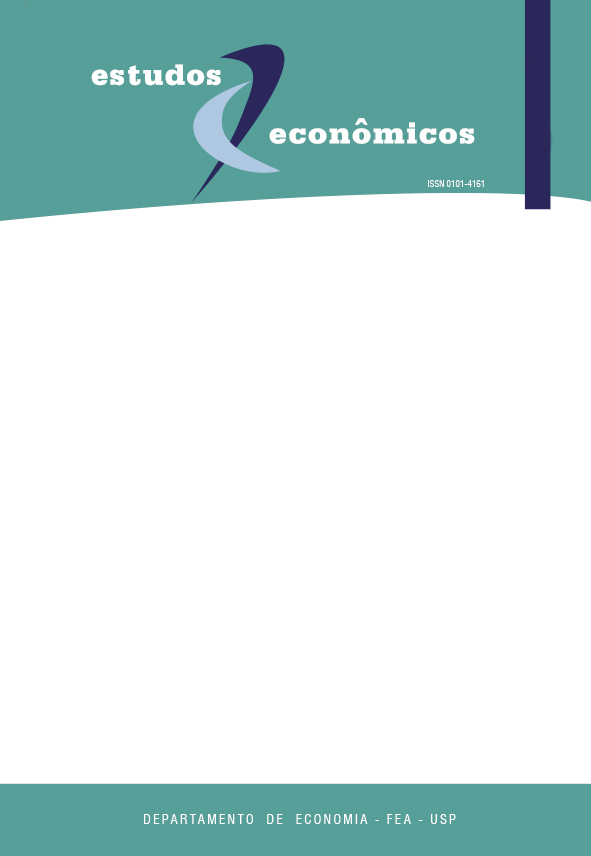Diferenciais de utilização do cuidado de saúde no sistema suplementar brasileiro
DOI:
https://doi.org/10.1590/S0101-41612009000100001Keywords:
moral hazard, health system, demand for health servicesAbstract
This paper investigates the existence of differentials of healthcare utilization between private and non private insured individuals using a counter-factual analysis. We estimate healthcare utilization for 1998 and 2003. Two variables of healthcare utilization have been selected: medical visits and the number of inpatient days. The main findings suggest a positive differential of utilization for private insured individuals. The magnitude of these differentials varies across types of medical care. Considering medical visits we found that each individual in the private sector uses 25% more services than if they only have access to healthcare services through public sector and for inpatient days this percentage is lower, around 10%.We use three different procedures to deal with the endogeneity of private insurance decision. Our findings are very robust and in accordance with international empirical evidence.Downloads
References
ABADIE, A.; IMBENS, G. Large sample properties of matching estimators for
average treatment effects. Econometrica, 74 (1), p. 235-267, 2006.
ANS - Agência Nacional de Saúde Suplementar. Disponível em: http://www.ans.gov.br.
BARROS, P. P.; Machado , M. P.; Sanz-de-Galdeano, A. Moral hazard and the demand for health services: a matching estimator approach. Journal of Health Economics, 2007, doi:10.1016/j.jhealeco.2008.02.007
CAMERON, A. C. et al. A microeconomic model of the demand for health care and health insurance in Australia. Review of Economic Studies. v. 55, n. 1, p. 85-106, 1988.
CHIAPPORI, Pierre-André et al. Moral hazard and the demand for physician services:
First lessons from a French natural experiment. European Economic Review, n.42, p 499-511, 1998.
CUTLER, D. M.; ZECKHAUSER, R. J. The anatomy of health insurance. In: CULYER, A. J.; NEWHOUSE, J.P. (Org.). Handbook of health economics. Amsterdam: North-Holland Press, 2000. p. 563-643.
JONES, Andrew. Applied econometrics for health economists – a practical guide. Office of Health Economics, London, 2001.
MANNING, W. G. et al. Health insurance and the demand for medical care: evidence
from a randomized experiment. American Economic Review, 77 (3), p. 251-277, 1987.
NEWHOUSE, Joseph P. et al. Free for all? Lessons from the RAND health insurance
experiment. Cambridge, MA: Harvard University, 1993.
NORONHA, K V. M. S.; ANDRADE, M. V. Desigualdades sociais em saúde: evidências
empíricas sobre o caso brasileiro. Revista Econômica do Nordeste, Fortaleza, v. 32, p. 877-897, 2001.
NYMAN, J. A. The value of health insurance: the access motive. Journal of Health Economics 18, p.141-152, 1999.
PAULY, M. V.; HELD, P. J. Benign moral hazard and the cost-effectiveness analysis of insurance coverage. Journal of Health Economics 9, p. 447-461, 1990.
SAPELLI, C.; VIAL, B. Self-selection end moral hazard in Chilean health insurance. Journal of Health Economics 830, p.1-18, 2003.
SAVAGE, E.; WRIGHT, D. J. Moral hazard and adverse selection in Australian private hospitals. Journal of Health Economics 826, p.1-29, 2002.
STANCIOLI, A. E. Incentivos e risco moral nos planos de saúde no Brasil. 2002. Dissertação
(Mestrado em Economia). Orientador: Hélio Zylberstajn. Faculdade de Economia, Administração e Contabilidade da USP, 81 p.
ZWEIFEL, P.; MANNING, Willard G. Moral hazard and consumer incentives in health care. In: CULYER, A. J., NEWHOUSE, J.P. (Org.). Handbook of health economics. Amsterdam: North-Holland Press, 2000. p. 410-459.
Downloads
Published
Issue
Section
License
Copyright (c) 2009 Monica Viegas Andrade, Ana Carolina Maia

This work is licensed under a Creative Commons Attribution-NonCommercial 4.0 International License.
By submitting an article, the author authorizes its publication and attests that it has not been submitted to any other journal. The original article is considered final. Articles selected for publication are proofread for grammatical and orthographic errors. The journal does not pay rights for published articles. The Institute of Economic Research from the School of Economics, Business and Accounting of the University of São Paulo (Instituto de Pesquisas Econômicas da Faculdade de Economia, Administração e Contabilidade da Universidade de São Paulo) owns the journal's copyright.




